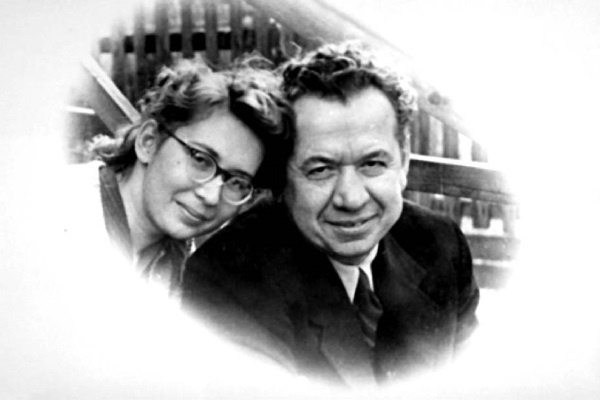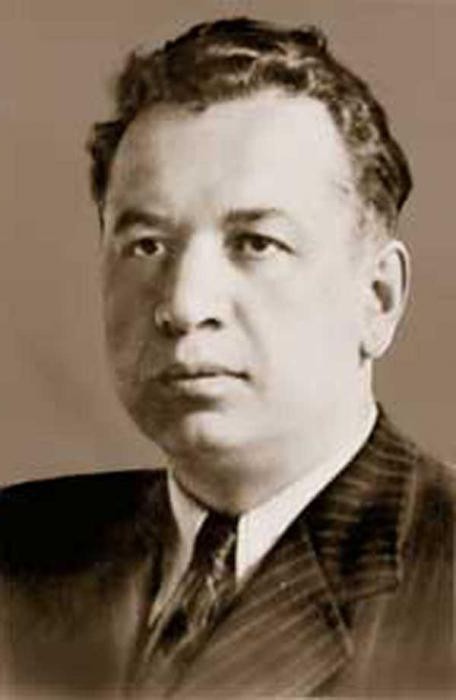This representative of the Soviet nomenclature tried to avoid publicity, because he was a modest and unpretentious person. However, his merits in leading positions in the system of public administration and his achievements as a public figure were very great. Sergey Nikiforovich devoted a significant period of his life to work in law enforcement agencies, and everyone could envy his career. Why did the leaders of the Soviet state notice precisely him? As one of the reasons for this circumstance, experts noted the fact that Kruglov Sergey Nikiforovich had a diploma of higher education, spoke several foreign languages, was a brilliant organizer, had a broad outlook, respected subordinates, unlike his "colleagues", who of all the listed qualities possessed one or a maximum of two. What was remarkable in the biography of this statesman and social activist? Let's consider this question in more detail.
Years of childhood and youth
Kruglov Sergey Nikiforovich, whose family was peasant, was born on October 2, 1907 in the village of Ustye (Tver province).
Soon, his parents moved to Petrograd, where his father went to work at the factory. But in the late 1910s, the mother, along with the offspring, returned to her former place of residence.
Already as a teenager, he began to work, namely to graze cattle. Naturally, Sergei did not have much time to study at school. However, in 1924 he manages to get primary education in the city of Zubtsov. Having reached the age of seventeen, the young man got a job as a secretary of the village council in the village of Nikiforovo. For diligence in labor, a young man after some time is appointed head of the village council.
In 1925, Kruglov Sergey Nikiforovich replenishes the ranks of the Komsomol and in parallel with this manages a reading-hut. Then he goes to the Vakhnovo state farm of the Rzhevsky district, where he first works as a trainee, then as a repair worker, and then as a tractor driver.
At the end of 1928, the young man was accepted into the Bolshevik party.
Years of army service and further labor activity
Soon Kruglov Sergey Nikiforovich drafted into the army. But he will last only one year. Being in a barracks position, he mastered a new profession of auto mechanic, which came in handy after demobilization.
Having given his debt to his homeland, the young man will go to Kustanai region, where he worked as a mechanical instructor in one of the educationally experienced grain farms.
University studies
After some time, Sergei Nikiforovich realizes that he needs to get a higher education, and in 1931 he became a student at the Industrial Pedagogical Institute. Karl Liebknecht, which is located in the capital. But he soon replaced the university, and not one. Carried away by party work in the student community, he simultaneously enters the Institute of Oriental Studies (Japanese sector), and after a short time becomes a student at the faculty of the Institute of the Red Professions, which opened up the prospect of Kruglov becoming a teacher. But fate made its own adjustments, and the young man failed to graduate from this university.
Party career
In 1937, an undergraduate at the Institute of the Red Professors was sent to the party. Kruglov Sergey Nikiforovich, whose biography is of particular interest to historians, falls into the Department of governing party bodies, where he acts as the responsible organizer.
Having gained experience in the work of the organs of the Central Committee of the CPSU (b), the young man is transferred to the NKVD, where he will serve under the leadership of Lavrenty Pavlovich Beria. What sphere of activity should Sergey Kruglov (People's Commissar) have to supervise in the new department for himself?
The “right hand” of Beria
He had to keep track of cases in which “colleagues” at work who committed misconduct and offenses were involved. Lavrenty Pavlovich was pleased with the choice of a new employee, and two months later Kruglov became a direct assistant to Beria, heading the personnel department of the NKVD. Such a sharp career rise belonged to the category of extraordinary events. But in 1934, the department of Lavrenty Pavlovich underwent reform: it was divided into the NKVD and the NKGB. Kruglov Sergey Nikiforovich, whose photo was already well known to the Soviet public, continued to remain the “right hand” of Beria, who instructed him to deal with the Gulag and production and construction departments. But operational work was outside the scope of Kruglov’s official activity, which saved him in 1953.
Years of the Second World War
At the beginning of World War II, two "power" departments were again united into one. And although formally Sergey Nikiforovich Kruglov is an assistant to Beria, he no longer takes part in the work of the NKVD, but goes to the front.
When the Nazis came close to Moscow, the Chekist took over the command of the 4th GU of the NKVD defensive construction and the 4th sapper army. For the defense of the capital in 1942 he will receive the Order of the Red Star. Kruglov Sergey Nikiforovich (commissar) continued his service in the power department and in the winter of 1943 his superiors assigned him the high rank of commissioner of state security of the second rank. In the NKVD, he continued to be deputy minister.
In 1944, for the mass deportations of Ingush, Chechens, Karachais, Kalmyks to the eastern regions of the country, the Chekist was awarded the Order of Suvorov of the 1st degree. Then Kruglov initiated in Ukraine a struggle with the OUN members, for which he received the Order of Kutuzov 1st degree. Then Sergey Nikiforovich goes to the Baltic states. In Lithuania, he performs mass cleanings.
At the end of the war, he provided security for foreign delegations arriving at the Yalta Conference.
After the war
In 1945, the Chekist, as a member of the Soviet delegation, will arrive in the US San Francisco, where the UN Charter will be created. From the British, he receives the highest noble title - “Knight of the British Empire”.
In the same 1945, the Soviet public learned that Kruglov Sergey Nikiforovich was the Minister of Internal Affairs of the USSR, he replaced Beria, who had a lot of work as part of the Politburo.
Death of the leader
In the spring of 1953, the “leader of the peoples” Joseph Stalin died, and, of course, this fact caused significant changes in the apparatus of state administration. Once again, the departments of the NKVD and the NKGB were united together, and Lavrenty Beria again took control of the power structure. Comrade Kruglov returned to the position of his first assistant. Soon, a behind-the-scenes power struggle erupted, and the head of the NKVD had good chances to take the post of head of state. But he had a serious competitor in the person of Nikita Sergeyevich Khrushchev, who ultimately became the winner in this game. The latter, having occupied the highest post in the country, began an active struggle with the old cadres, which should be replaced by his proxies. Naturally, not only Lavrenty Beria lost his privileged position, but also his deputy - Sergey Kruglov, who was transferred to work as an assistant manager to the Ministry of Power Plant Construction. But in a new capacity, the Chekist did not work long.

Already in 1957 he was sent to the provincial Kirov, where he was appointed assistant chairman in the regional council of national economy . But Kruglov remained in this status for a short time.
The final stage of a career
In 1958, due to the deterioration of his health, Sergei Nikiforovich was forced to apply for disability and retire.
In 1960, the ex-minister of the NKVD of the USSR was expelled from the ranks of the CPSU. He was charged with participating in political repression. But Soviet officials considered that a person who was not connected with the party did not deserve the right to receive a “police” pension, therefore they deprived him of this social payment and also robbed him of his office apartment. After a while, the former Chekist tried to restore his membership in the CPSU, but this question remained in limbo.
One way or another, Kruglov did not finish working after disability. He worked for some time at the Department of Finishing Works under the Ministry of Medium (Nuclear) Engineering. In recent years, the official lived quite unpretentiously and unassumingly.
Family status
Sergei Nikiforovich Kruglov was an exemplary family man. With his only wife, Taisiya Dmitrievna Ostapova, he legalized relations in 1934. They met when they were still students of the Industrial Pedagogical Institute, and lived in the same dormitory. The story of one of the dates was a prerequisite for the marriage. It so happened that Taisia could not come on time on time. The reason turned out to be banal. Earlier, girls in the room, including Taisiya, bought one pair of shoes for everyone, as students at that time were in need of money. And one of her friends, who left in “public” shoes, forgot that Taisia had to go on a date and was late for three whole hours. Naturally, there was a surge of emotions, and Taya guessed that if a young man waited for her, she would become his wife. And Sergei waited for her, although he was very worried that she would not come. As a result, the wedding took place.

But she was very modest, since the material condition of the newlyweds at that time left much to be desired. The first time after the wedding, they continued to live in a hostel, and separately from each other. Then they had a daughter, Irina, and a son, Valery.
Sergei Kruglov died tragically in July 1977. He got under the train next to the Pravda platform (Yaroslavl direction of the metropolitan railway). The statesman was buried at the Novodevichy cemetery in Moscow.